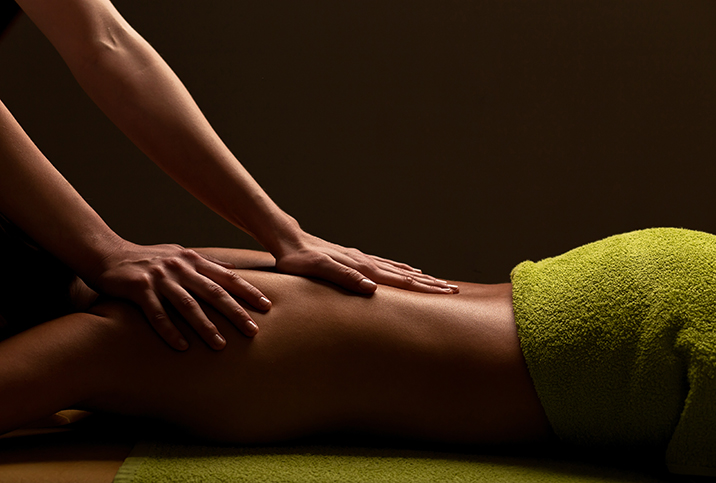How Massage Therapy Can Help With Endometriosis Pain

Endometriosis is a disorder in which uterine tissue grows in places it shouldn’t, such as the ovaries, fallopian tubes or intestines. Symptoms include pelvic pain, irregular periods, painful intercourse, fatigue and nausea. Endometriosis can also cause infertility or an ectopic pregnancy.
Pain from endometriosis can be debilitating, and if you’re one of the 11 percent of women who struggle with the condition, you know how difficult it is to live with. At this time, endometriosis does not have a cure, but it can be treated with hormones and laparoscopic surgery. Unfortunately, not all treatments work for everyone and if the affected person wants children, not all treatment options are appropriate.
Fortunately, massage therapy is a low-risk way to manage pain from endometriosis.
How massage therapy works
When suffering from endometriosis, the muscles and tendons in your pelvic area may contract repeatedly resulting in tight muscle pain. Massage therapy can help loosen and relax those muscles and reduce the pain caused by the contractions.
Massage therapists often work in the pelvic and abdominal areas to relieve pain and tightness. Their movements can loosen scar tissue and adhesions while also increasing blood flow to the area. This treats cramping and other painful symptoms caused by endometriosis. If you experience back pain, your massage therapist can help alleviate that, as well.
Massage therapy can also cause your body to release endorphins and dopamine, which can diminish pain in the short term.
Living with endometriosis is a constant struggle, and it may take your doctors years to confirm that you have the disorder. Massage therapy is relaxing and can lower your anxiety levels during the stressful journey to diagnosis.
How massage therapy compares
Unlike surgery and hormonal treatments, massage therapy won’t alter your body, and it's not invasive. Avoiding surgery also means that you will still be able to get pregnant. There's also no chance of becoming addicted to prescription opioids you might have been given to ease the pain. And massage therapy typically costs less than other forms of treatment and you can schedule sessions as needed.
Also, if you learn how to do the movements that best work for you, try soothing your endometriosis pain by yourself or, better still, with a partner.
Before you set up your first appointment for massage therapy, make sure your massage therapist knows what they’re doing: A massage therapist should practice techniques that don’t hurt and know how to make you feel comfortable. Check qualifications, and also look for honest recommendations from their current patients.
Massage therapy is a good strategy to combat the stress and pain of endometriosis and works well alongside other treatments and medications. In some cases, it can even become a central part of your endometriosis treatment plan.


















